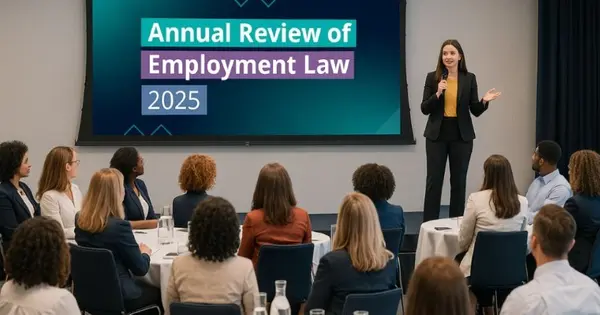Jason Elliott was called to the Bar of Northern Ireland in 2013 and is the Associate Head of School of Law at Ulster University. As a practising barrister, he has developed a largely civil practice representing individuals, companies and public bodies in litigation. This covers a wide range of areas including personal injuries, wills and employment law. In terms of employment law, he has represented both applicants and respondents in the Industrial Tribunal. At Ulster University, Jason lectures extensively on the civil areas of practise such as Equity and Trusts and delivers employment law lectures for both undergraduate and postgraduate students.
Background:
The claimant was employed by the respondent from November 2017 until October 2020 as a crane driver. The claimant was 66 at the time of termination (his state retirement age) and he turned 66 during the redundancy process which was run by the respondent.
The respondent decided that redundancies were required following a downturn in work due to the Covid pandemic. The process started with a voluntary redundancy exercise of which eight volunteers came forward with four approved and four rejected. Of the four rejected two were crane drivers – the crane drivers were all put into a pool and a selection matrix applied. The two rejected for voluntary redundancy was due to their experience as they had driven heavier cranes.
The claimant argued that the rejection of the two volunteer crane drivers was specifically devised as a way of getting rid of him as he was approaching retirement age. However, the Tribunal stated there was no evidence of this and the scoring matrix had already been decided upon before the voluntary redundancies had been approved/rejected (it had been discussed at the second collective consultation meeting).
The claimant scored joint lowest in the matrix. Initially only one individual was being made redundant and that was to be the claimant as the tie-breaker was length of service. However, in August 2020 it was increased to two to be made redundant. Therefore, the other joint-lowest scorer was also made redundant. It is notable that the claimant was the oldest in the pool yet the other was the second youngest.
HR emailed the claimant setting out vacant roles within the respondent. The claimant did not apply citing that he would not have been suitable. The other individual was re-employed as a barge master after his redundancy and that was through an open competition.
Outcome:
The Tribunal found that the process and outcome of the redundancy process was within the band of reasonable responses from the respondent. Therefore, it was a fair reason for dismissal and a fair process had been undertaken. On the age discrimination claim, the Tribunal found that the claimant had been unable to prove facts which would have suggested that an act of age discrimination had occurred. Therefore, the burden did not shift to the respondent in that regard. As a result, the claims were dismissed.
Practical Guidance for Employers:
This case demonstrates an issue in which voluntary redundancy was rejected and those individuals were then put into the pool of employees at risk of redundancy. The rejection was based upon appropriate considerations relating to the experience including supervision experience. This rejection was borne out in the scoring matrix with those employees scoring well yet the claimant did not have that experience. Therefore, the Tribunal was able to state that it was a fair process, and the outcome was reasonable in the circumstances.
NI Tribunal decisions are available on the OITFET website:
http://www.employmenttribunalsni.co.uk/
Continue reading
We help hundreds of people like you understand how the latest changes in employment law impact your business.
Please log in to view the full article.
What you'll get:
- Help understand the ramifications of each important case from NI, GB and Europe
- Ensure your organisation's policies and procedures are fully compliant with NI law
- 24/7 access to all the content in the Legal Island Vault for research case law and HR issues
- Receive free preliminary advice on workplace issues from the employment team
Already a subscriber? Log in now or start a free trial




